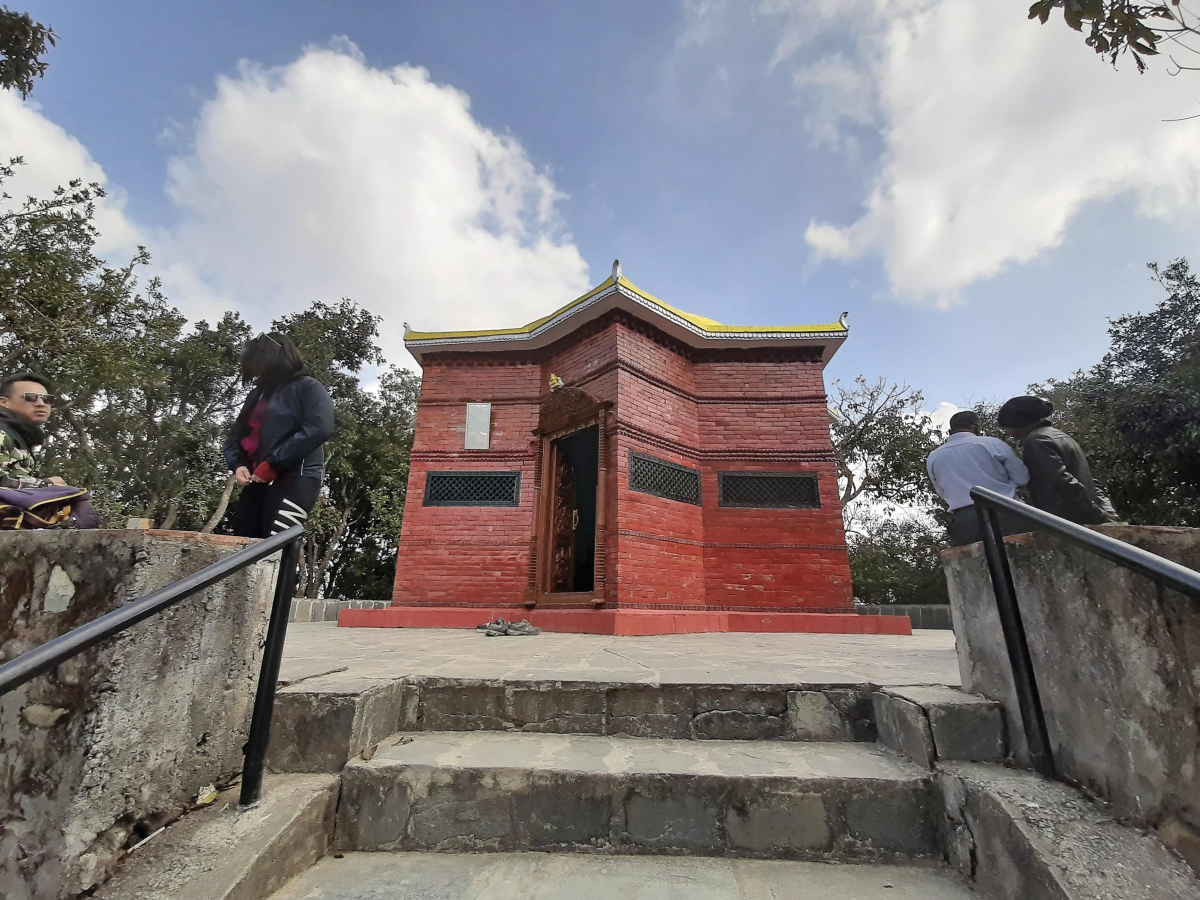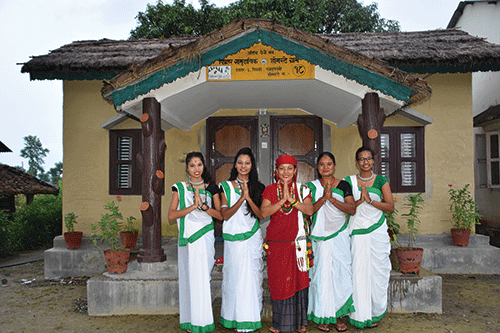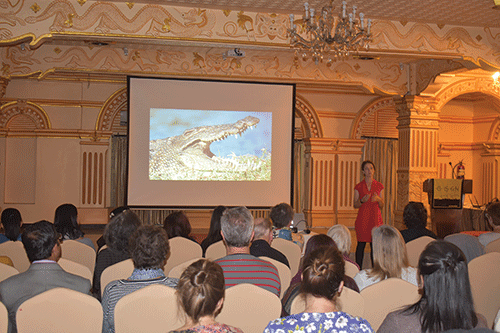 As you drive or walk along the Pulchowk- Jawalakhel road in Lalitpur, notice that there is a very large chariot being constructed. It is quite a sight and fascinating to see the chariot dedicated to the “one full of compassion” or Karunamaya, take shape each day. You may also notice that the roads are quite wide and the historical logic for this is that the urban planners of ancient Nepal aligned these wide streets for the chariot. It would be many centuries before cars were invented. The chariot, with the image of Karunamaya, and the people who pull it and accompany it on its journey through Patan really need that space. Also notice that just right of the space where the chariot is being built is a pond. It is here that the cane reeds (bett or rattan) are soaked and softened to tie the whole chariot together. The rattan habitats around Nepal, from where these reeds come, are becoming scarce. On a recent trip to Chitwan I was told that people do not like them because they tend to attract wild elephants.
As you drive or walk along the Pulchowk- Jawalakhel road in Lalitpur, notice that there is a very large chariot being constructed. It is quite a sight and fascinating to see the chariot dedicated to the “one full of compassion” or Karunamaya, take shape each day. You may also notice that the roads are quite wide and the historical logic for this is that the urban planners of ancient Nepal aligned these wide streets for the chariot. It would be many centuries before cars were invented. The chariot, with the image of Karunamaya, and the people who pull it and accompany it on its journey through Patan really need that space. Also notice that just right of the space where the chariot is being built is a pond. It is here that the cane reeds (bett or rattan) are soaked and softened to tie the whole chariot together. The rattan habitats around Nepal, from where these reeds come, are becoming scarce. On a recent trip to Chitwan I was told that people do not like them because they tend to attract wild elephants.
A bit to the right of the pond is a satta or traditional rest house where the wheels of the great chariot and the main beam are stored in the months leading up to the festival. The beam is replaced every twelve years and the old ones are gifted to the different neighbourhoods of Patan. Next to this long satta is the Ashok Stupa, in front of which the chariot will turn east and head into the core areas of the ancient city of Patan. Each day the chariot and Karunamaya will rest and the local people will get a chance to make offerings and light lamps. The families also use the occasion to invite family members and friends for a feast.
The structure of the chariot consists of the wheels, a square platform and a shrine to house the image of Karunamaya. Above the shrine, a huge spire of wooden beams and poles will rise, bound together with vines, rope and rattan. The entire spire is then covered with green juniper boughs. There has been talk of, and some local effort towards, getting the chariot festival recognized as a World Intangible Heritage by UNESCO. It would do well for Nepal and the festival to be globally listed so that it can continue without disruption for many centuries to come. There is a need to put those social networks into action and get the nomination process through.
As the chariot nears completion and the image of Karunamaya is placed in the shrine, people from all over the valley come to pay homage. As Nepal goes through a difficult time in its history, many people want to know when and how the people will unite and come together. The festival of the chariot of Karunamaya is a good example of how people come together around a common value. There is a lot of hard work. There is a lot of organizing. There are numerous obstacles to remove. In the end there is a big feast and everyone looks forward to the festivities the following year. Politicians, business and corporate heads, development partners and everyone else who is interested in better coordinating a “team” of Nepalis and getting them to adopt a shared common value and purpose will do well to observe and learn from this globally unique festival.
Coffee Cascara Extra income for coffee farmers
In March 2021, I had the chance to taste a different kind of muffin. Made by Makoo Bakery...










